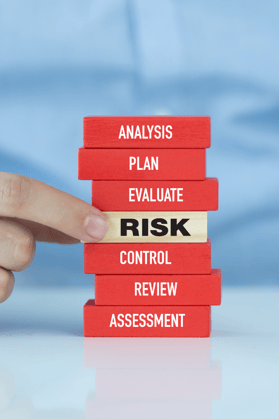
When investing in real estate, some risks are obvious. Others? Less so. Effective risk management involves recognizing and mitigating all risks, from the common to the rare. Are the chances slim? Sure. But you’ll be kicking yourself if you don’t do your due diligence in handling these sneaky buy-and-hold real estate investing risks!
6 Lesser-Known Risks in SFR Investing
Risk #1 – Fraud
Investors, don’t make the mistake of thinking fraud won’t happen to you. Fraud tactics are advancing so much that even experienced investors can be duped. There are fake investment opportunities, title fraud, mortgage fraud, and identity theft – among other slimy tricks. This is why investors can’t take anything at face value. Verify. Double-check. Corroborate.
Further Reading: 5 Steps for Investors to Guard Against Rising Real Estate Fraud
Risk #2 – Environmental Issues
When buying an investment property, soil quality is probably the last thing on your mind. Environmental risks may also include water pollution or the presence of hazardous materials. Environmental liabilities can be costly to remediate and may not always be immediately apparent during the due diligence phase.
At the very least, investors might struggle with curb appeal when the soil is terrible. Removing dead trees and constantly replacing plants isn’t just a pain; it’s expensive!
Risk #3 – Legal and Regulatory Changes
Changes in zoning laws, building codes, or other regulatory requirements can affect the value and use of a property. Investors must stay informed about legal and regulatory developments that could impact their real estate investments. Before you buy, look carefully into any existing plans for the neighborhood, especially if it’s in the middle of revitalization. For out-of-state investors, this risk can be incredibly challenging to recognize.
Risk #4 – Gaps in Insurance Coverage
Have you ever had a disaster strike, only to find out you didn’t have the insurance coverage to soften the blow? We can’t imagine a worse feeling! While investors typically carry property insurance, coverage gaps may expose them to certain risks, such as natural disasters, lawsuits, or vandalism. Reviewing insurance policies regularly and obtaining appropriate coverage is essential.
You may want to revisit your business structure, too. For example, an LLC helps protect an investor’s personal liability. In other words, they can’t come after YOU in a lawsuit – just your business and its assets.
Risk #5 – A Lack of Liquidity
We’ll be honest: real estate is not the most liquid investment you can make. If you need money, there are steps to take first. Now, there are ways to tap into your equity without selling a property. That said, selling is one of the primary ways to get cash. Finding a buyer in a troubled market can be a big challenge. Have some exit strategies in mind for other ways to get cash, and don’t overextend your resources so much that you need that quick buck.
Further Reading: Here’s How to Access Property Equity WITHOUT Selling
Risk #6 – Supply Chain, Material Costs & Contractor Delays
The supply chain isn’t nearly as messy as it was at the height of the pandemic. That said, there’s no telling when there may be new delays. Difficulty in acquiring materials correlates to rising prices. These prices – and that of labor – will vary by market. Be mindful of the materials you choose when preparing for renovations.
Here’s an example. In the South, you’ll see many homes built out of brick. In other regions, they may be predominantly made of wood. These trends have to do with availability. It’s more cost-effective to use materials in abundance (or easily imported).
Additionally, investors must consider contractor delays. Denser markets mean tighter schedules for contractors. You’ll want to make plans far in advance. There can also be delays with things like acquiring permits. Because these delays, especially in a large-scale project, can prolong vacancies, investors can miss out on more income than they bargained for!
So…What Should Investors Do?
It isn’t easy to manage these kinds of curveball liabilities. The best thing investors can do is be aware and be prepared. That means doing everything within your power to execute proper due diligence. Have these possibilities on your radar. You can’t totally eliminate risk, but mitigation starts with awareness.
Ready to invest but worried about risk? Let your REI Nation advisor help!










-1.jpg)
-1.jpg)
